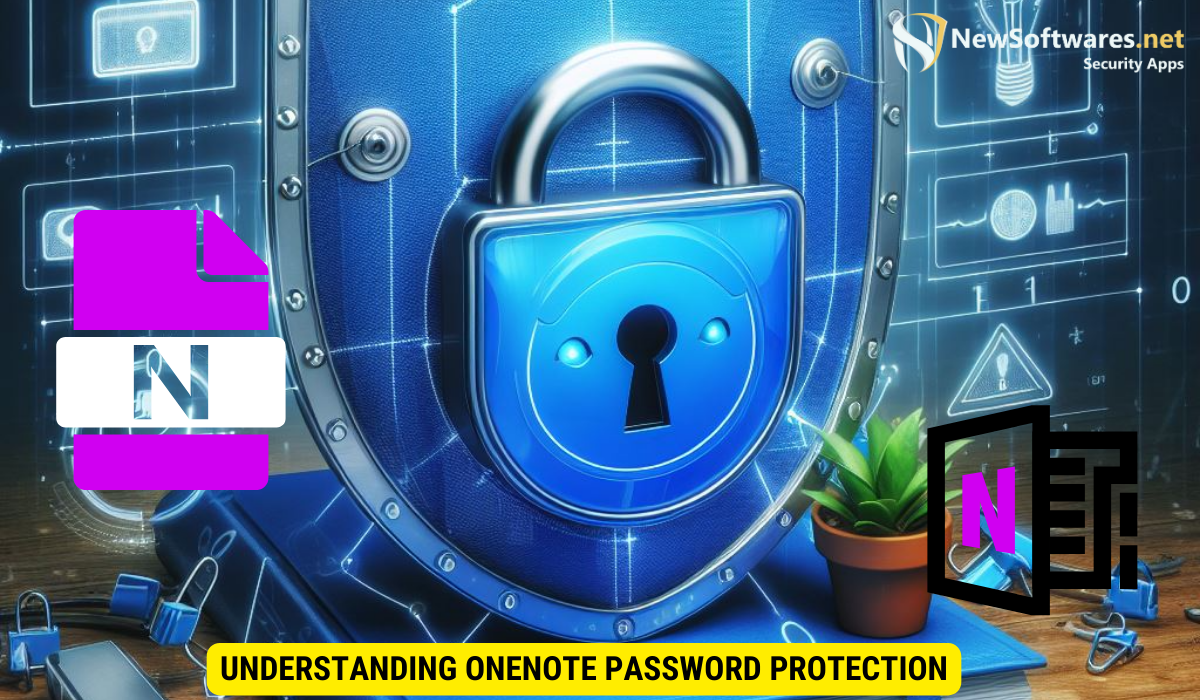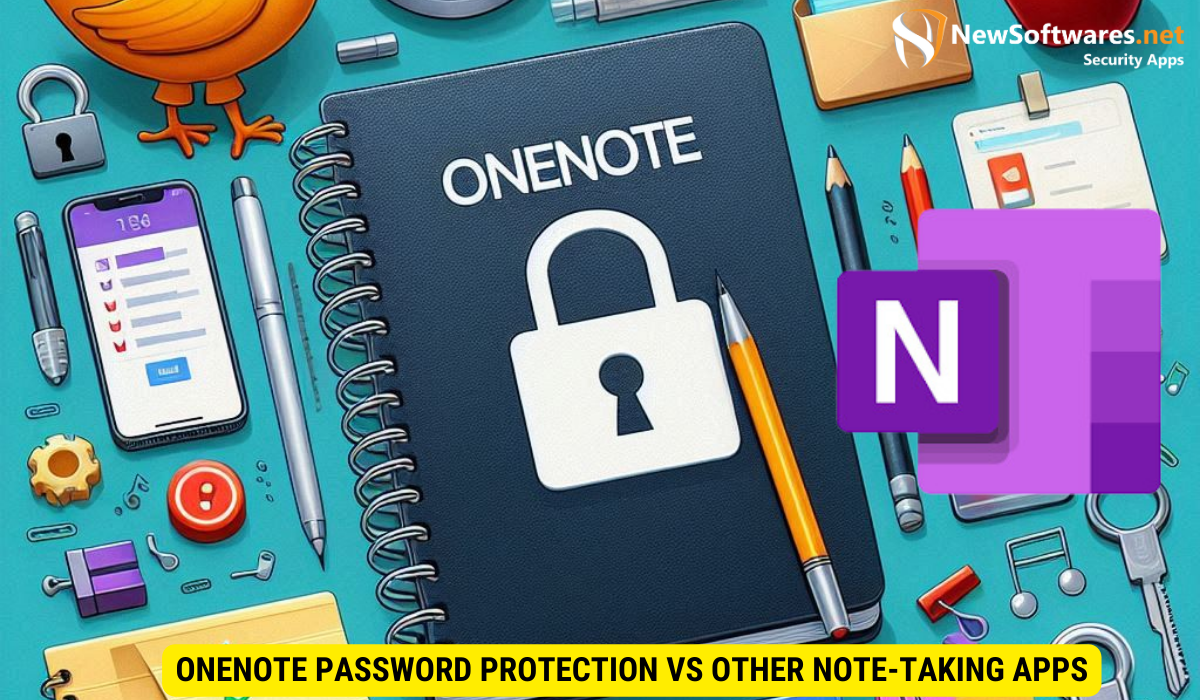OneNote password protection offers a reasonably secure way to safeguard your notebooks and the information within them. With strong encryption and the ability to set up unique passwords, OneNote provides a solid level of security. However, it’s crucial to remember that no security measure is foolproof, and it’s essential to follow best practices, such as using strong passwords and enabling additional security measures like two-factor authentication.
OneNote has become a popular choice for note-taking and organization, thanks to its user-friendly interface and seamless integration with other Microsoft apps. However, when it comes to protecting sensitive information, such as personal and professional data, the question arises – how safe is OneNote password protection?
Understanding OneNote Password Protection

Before delving into the safety of OneNote password protection, let’s first understand how it works. OneNote allows users to set up a password to encrypt their notebooks, providing an additional layer of security. This means that even if unauthorized individuals gain access to your device or cloud storage, they won’t be able to read the content of your notebooks without the password.
OneNote password protection is a crucial feature for users who prioritize data security and confidentiality. By setting up a password, you can safeguard sensitive information such as personal notes, financial details, or confidential work documents. This added security measure ensures that your data remains secure, even in the event of a security breach or unauthorized access.
The Basics of OneNote Password Protection
OneNote password protection is relatively straightforward. Users can set up a password for each individual notebook, ensuring specific information remains private. It is essential to choose a strong, unique password and avoid using common phrases or easily guessable combinations.
Furthermore, OneNote allows users to change or remove passwords at any time, providing flexibility and control over the security settings of their notebooks. This feature is particularly useful in scenarios where password confidentiality may be compromised, necessitating a quick password update to maintain data integrity.
The Technology Behind OneNote Password Protection
Behind the scenes, OneNote uses strong encryption algorithms to secure your data. It employs the Advanced Encryption Standard (AES) with a key strength of 128 bits, making it highly difficult for hackers or unauthorized individuals to crack the encryption. This ensures that even if your notebook falls into the wrong hands, the information within remains protected.
Additionally, OneNote implements salting techniques to further enhance the security of passwords. Salting involves adding random data to the input of a hash function, making it more challenging for attackers to use precomputed tables or rainbow tables to crack passwords. This advanced security measure adds an extra layer of protection to your encrypted notebooks, reinforcing the integrity of your confidential data.
Evaluating the Strength of OneNote Passwords
While OneNote password protection provides a level of security, the strength of your chosen password plays a critical role in safeguarding your data. Let’s explore factors influencing password strength and common weaknesses in password protection.
When considering the factors that influence the strength of a password, it’s essential to understand that a strong password is your first line of defense against unauthorized access. Length is a crucial factor, as longer passwords are generally more secure than shorter ones. Complexity is also key, with the inclusion of numbers, symbols, and a mix of upper and lowercase letters adding layers of security. Avoiding easily guessable patterns or using personal information in your password is vital to enhance its strength.
Factors Influencing Password Strength
Creating a strong password involves a combination of factors. Length, complexity, and the inclusion of numbers, symbols, and upper and lowercase letters all contribute to password strength. It is recommended to create passwords that are at least 12 characters long and avoid easily guessable patterns or personal information.
Additionally, consider using passphrases, which are longer combinations of words that are easier to remember but harder to crack. For example, a passphrase like “PurpleElephant$Jumping123” is more secure than a shorter, complex password. Implementing multi-factor authentication alongside a strong password can further enhance the security of your OneNote account.
Common Weaknesses in Password Protection
Despite the availability of password protection, many users still fall victim to common weaknesses. These can include using easily guessable passwords, reusing passwords across multiple platforms, and neglecting to update passwords regularly. These practices can render password protection ineffective.
It’s crucial to avoid using passwords such as “password123” or “123456” that are easily guessable by cybercriminals. Furthermore, reusing the same password across different accounts increases the risk of a security breach, as a compromised password can grant access to multiple platforms. Regularly updating your passwords and enabling features like password expiration can help mitigate these risks and strengthen your overall security posture.
OneNote Password Protection vs Other Note-Taking Apps

OneNote is not the only note-taking app available. Let’s analyze how OneNote’s password protection measures up against other popular alternatives like Evernote and Google Keep.
When it comes to securing your notes and sensitive information, the choice of note-taking app plays a crucial role. OneNote stands out for its comprehensive password protection features, ensuring that your data remains safe from unauthorized access.
Comparing OneNote with Evernote
Evernote also offers password protection for its notebooks. However, OneNote provides an advantage with its encryption technology, making it a more secure option compared to Evernote’s password protection.
Furthermore, OneNote’s integration with Microsoft’s security protocols adds an extra layer of protection, giving users peace of mind when storing confidential information.
Comparing OneNote with Google Keep
Google Keep, on the other hand, does not offer password protection for individual notes or notebooks. This can be a concern for users who prioritize data privacy and need robust security measures.
While Google Keep excels in simplicity and ease of use, its lack of advanced security features may deter users who handle sensitive data on a regular basis. In such cases, OneNote’s robust encryption and password protection capabilities make it a preferred choice for those seeking a secure note-taking environment.
Enhancing OneNote Password Security
While OneNote password protection offers a decent level of security, it’s always wise to take additional measures to ensure the safety of your information. Let’s explore some best practices.
Best Practices for Creating Strong Passwords
Creating a strong password should be a priority for every user. Make sure to use a combination of alphanumeric characters, symbols, and uppercase and lowercase letters. Additionally, consider using a password manager to generate and store complex passwords securely.
Additional Security Measures for OneNote
Beyond password protection, OneNote allows users to enable two-factor authentication, adding an extra layer of security. Users can link their Microsoft account with their mobile device, ensuring only authorized individuals can access their notebooks.
The Future of OneNote Password Protection
As technology evolves, so does the need for heightened security measures. Let’s explore potential improvements in OneNote security and the role of biometrics.
Potential Improvements in OneNote Security
Microsoft actively works to enhance the security of its products, including OneNote. With future updates, we can expect improvements in encryption algorithms, additional authentication methods, and advanced security features to protect sensitive information.
The Role of Biometrics in OneNote Security
Biometric authentication, such as fingerprint or facial recognition, holds promise for enhancing the security of OneNote and other applications. Integrating biometrics into password protection can provide an added layer of convenience and security for users.
Key Takeaways
- OneNote password protection encrypts notebooks, adding an extra layer of security.
- Choosing a strong and unique password is essential for enhanced security.
- OneNote’s encryption technology makes it more secure than some other note-taking apps.
- Taking additional security measures, such as enabling two-factor authentication, enhances OneNote’s password protection.
- The future of OneNote security may include advancements in encryption algorithms and the integration of biometric authentication.
FAQs
Can I use OneNote password protection on multiple devices?
Yes, OneNote password protection applies to the specific notebooks you choose to encrypt. As long as you sign in to your Microsoft account on multiple devices, your password-protected notebooks will be accessible.
What happens if I forget my OneNote password?
If you forget your OneNote password, it can be challenging to regain access to your encrypted notebooks. Therefore, it’s crucial to keep a record of your passwords in a secure location or consider using a password manager.
Is OneNote password protection hack-proof?
While OneNote password protection is strong and difficult to crack due to its encryption technology, it’s important to understand that no security measure is completely hack-proof. Creating strong, unique passwords and enabling additional security measures will significantly reduce the risk of unauthorized access.
Can I share my password-protected OneNote notebooks?
Yes, you can still share your password-protected OneNote notebooks with others. However, they will need to enter the correct password to view the content. Ensure that you only share sensitive information with trusted individuals.
Can I disable OneNote password protection?
Yes, you can disable password protection for individual notebooks in OneNote. However, it’s important to consider the security implications before doing so. Make sure to have a backup plan in place if you decide to remove password protection.
Conclusion
In conclusion, OneNote password protection provides users with a reliable way to protect their sensitive information. With its encryption technology and the option to enable two-factor authentication, OneNote offers a good level of security. However, it’s crucial for users to take responsibility for creating strong passwords and following best practices to ensure the safety of their data. With the potential for future improvements and the integration of biometrics, the future of OneNote password protection looks promising.
